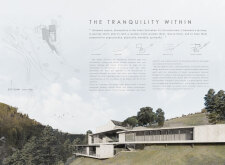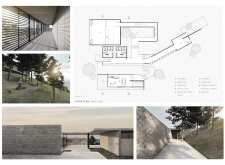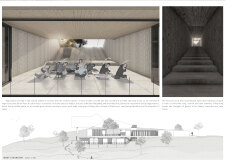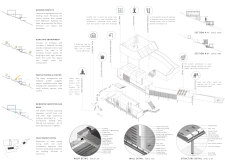5 key facts about this project
At its core, the project serves the function of [insert function], aimed at addressing the needs of its users while contributing positively to the local environment. The structure is characterized by a layout that promotes interaction, with open and flexible spaces that encourage [insert specific types of interactions]. The thoughtful arrangement facilitates a flow that enhances the user experience, ensuring that each area serves its intended purpose efficiently while promoting a sense of openness and accessibility.
One of the notable elements of this architectural design is the careful selection of materials, each chosen for its performance, sustainability, and visual impact. Concrete forms the robust foundation and structure, providing durability and longevity. Large panels of glass enhance natural light and offer transparent views, blurring the lines between indoor and outdoor realms. The inclusion of steel elements not only supports innovative design features but also allows for expansive spaces that elevate the overall aesthetic. Timber is thoughtfully incorporated into the design, introducing warmth and a connection to nature, while natural stone cladding references local geological characteristics and reinforces the connection to the region.
Unique design approaches are evident throughout the project, particularly in its treatment of environmental factors. The building integrates sustainable practices through green technologies, such as green roofs and rainwater harvesting systems, creating a self-sufficient environment that minimizes its ecological footprint. This attention to sustainability speaks to a growing trend in contemporary architecture, where the focus is not solely on the aesthetics of a structure but also on its environmental impact and efficiency.
The project also reflects a sensitivity to the local context, where the design harmonizes with the existing urban fabric. Incorporating elements that resonate with local culture and history, the architecture serves as a canvas for community expression. The facade treatment and structural form give a nod to traditional architectural styles while embracing modern techniques, creating a dialogue between the past and present.
Additionally, the spatial configurations within the project are designed with user comfort as a priority. The interplay of light and shadow, generated through strategic openings and overhangs, fosters a welcomed atmosphere inside the building. Each area is thoughtfully proportioned, ensuring that occupants can engage in their activities comfortably whether they are collaborating in communal spaces or seeking solitude in quieter zones.
As visitors explore this architectural project, they will find that it invites further inquiry into its various components, including architectural plans, architectural sections, and architectural designs that detail its thoughtful construction and layout. The architectural ideas expressed throughout this project illustrate a commitment to creating spaces that not only fulfill their intended functions but also resonate within their environment.
For those interested in delving deeper into the nuances of this architectural achievement, a comprehensive presentation of the project awaits, offering insights into its design philosophy, material composition, and community engagement strategies. It invites readers to appreciate the artistry and intent behind each design decision made throughout the process.


























